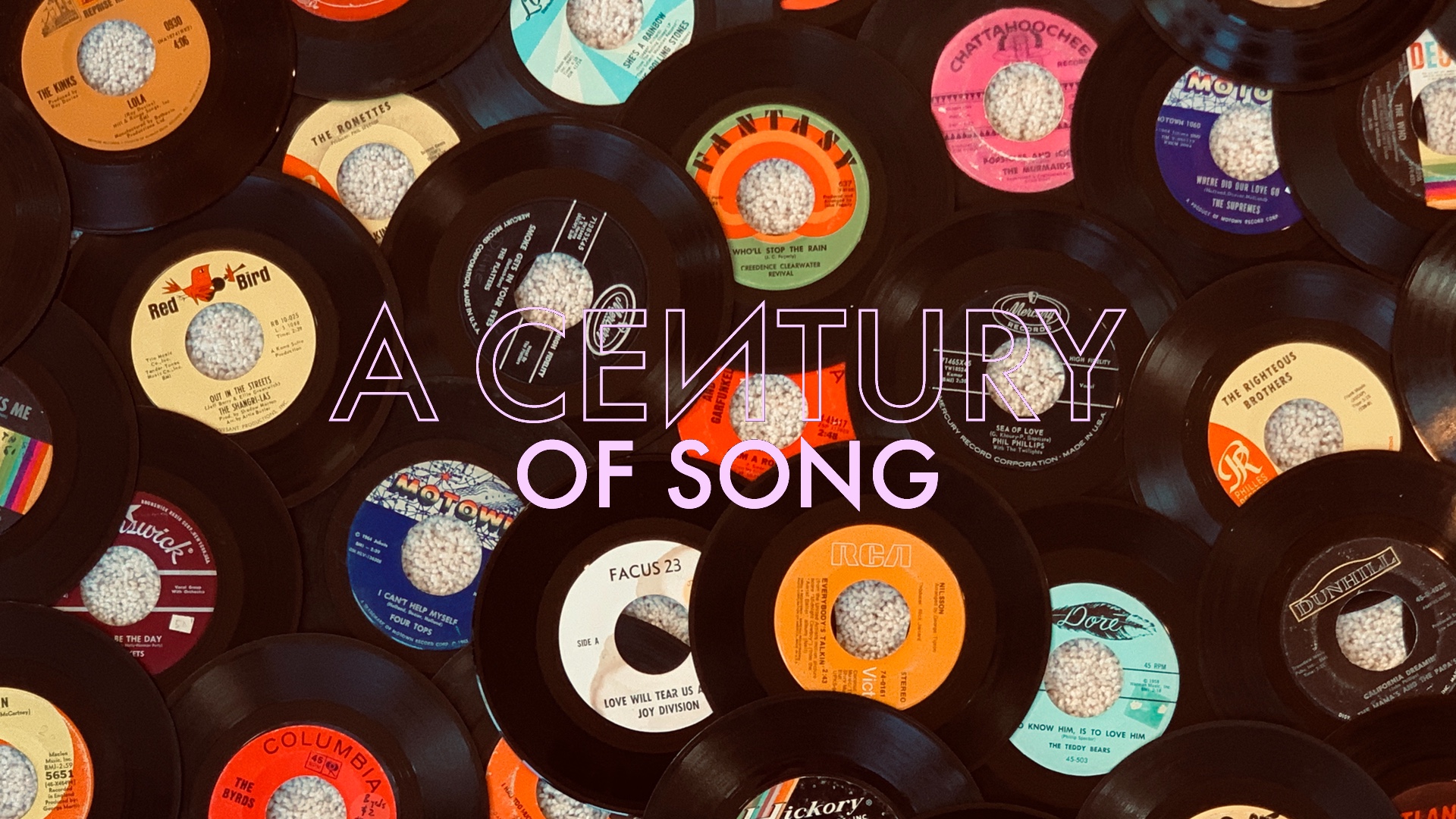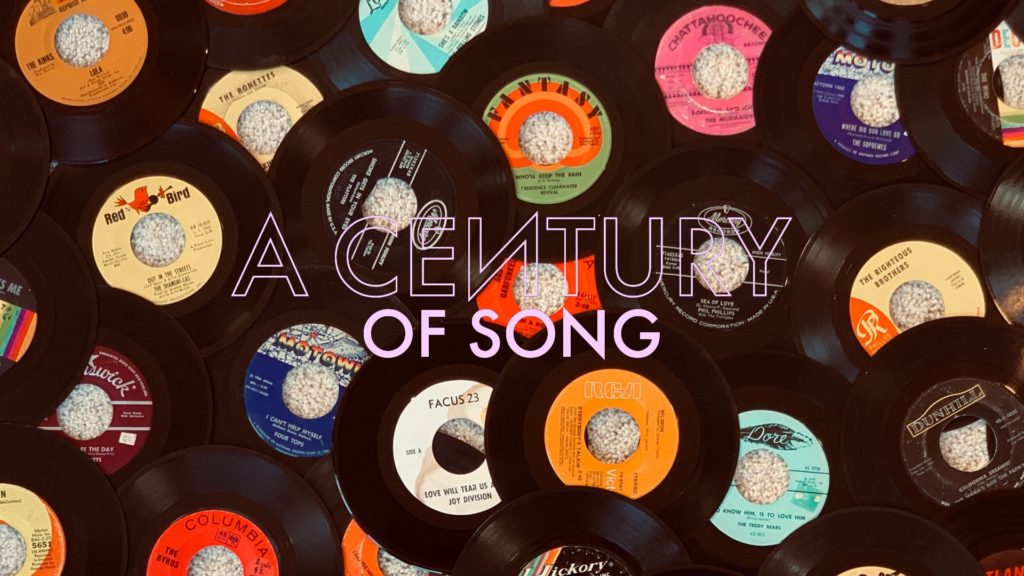
A Century of Song is an attempt to summarize 100 years of popular music through 1000 carefully chosen tracks. Included within this list are landmark singles, stellar album cuts, huge hits, hidden gems, and more than a few personal favorites. Read the introduction for the project here, and enjoy the embedded videos and Spotify playlist.
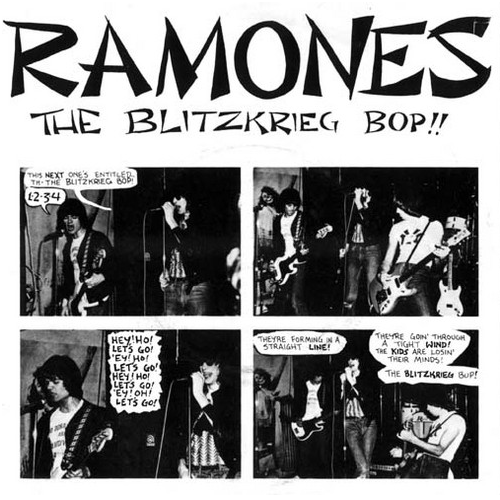
260
Considered by many to be the track that launched punk rock in the United States, “Blitzkrieg Bop” was one of the most influential singles of all-time. Despite its importance in a genre associated with a nihilistic, anti-authority outlook, “Blitzkrieg Bop” is an infectiously catchy track – every bit as arena ready as the rock behemoths that punk aimed to undermine.
What “Blitzkrieg” lacks in sophistication it more than makes up for in urgency. Like the “lightning war” tactic that gave the song its name, the track flies by at a blistering pace – even in the comparatively subdued studio take that became Ramones’ debut single in early 1976.
In time, the “Hey ho, let’s go” chant that serves as “Blitzkrieg Bop”‘s most inviting element would become iconic. It would serve as a crowd rouser in stadiums and arenas across the globe. Ramones shirts would be sold to semi-fashionable teenagers in big box stores. Music that had once been seen as subversive would become surprisingly mainstream. With hooks like these, it was inevitable that punk would eventually reach the masses.
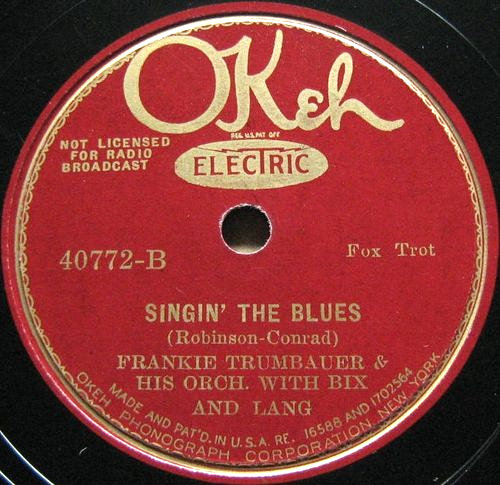
259
One of the earliest jazz songs to ever be recorded in a studio, “Singin’ the Blues” was first released by The Original Dixieland Jazz Band in 1920 on Victor Records. Seven years later, the song would receive its definitive take in a version recorded by saxophonist Frankie Trumbauer and his eight-piece jazz orchestra.
Trumbauer was an oft-overlooked figure of jazz music’s early years, and it’s somewhat fitting that his signature recording is actually best known for the work of cornetist Bix Beiderbecke. The young, rising star was considered to be the only contemporary rival of Louis Armstrong, and “Singin’ the Blues” found Beiderbecke playing one of his greatest solos on record.
While the song sounds effortless, it’s the product of a remarkably cohesive collaboration between several of the best musicians of the time. In addition to Beiderbecke, Trumbauer (C-melody saxophone), Jimmy Dorsey (clarinet), and Eddie Lang (guitar) also provide their share of memorable contributions to the track. Their talent and chemistry help to make “Singin’ the Blues” one of the finest jazz singles of its era.
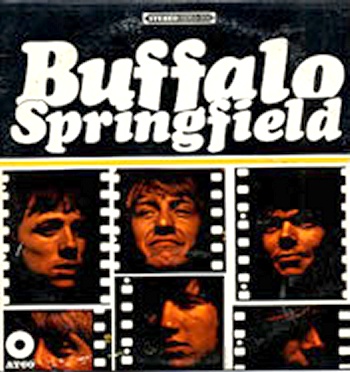
258
As the house band at the famous Whiskey a Go Go, Buffalo Springfield had a front row seat to the protests – and then riots – that broke out in response to the curfews imposed on Hollywood’s Sunset Strip in the fall of 1966. While Stephen Stills wrote the band’s signature song as a commentary on the clashes prompted by those curfews, it would take on a far deeper meaning in the coming years.
Considered to be one of the songs most associated with the anti-war protests of the late-sixties, “For What It’s Worth” was a relatively early example of folk rock as social commentary. The song’s measured tempo and laid-back dynamic gave it a contemplative feel, one that clashed with the more overt, heavy-handed messages of songs like Barry McGuire’s “Eve of Destruction.”
Musically, the most intriguing element of “For What It’s Worth” was the work of the band’s wunderkind guitarist, Neil Young. His piercing harmonics would give the song an auditory signature – one that served as a perfect complement to the wakeup call that was suggested by Stills’ lyrics.
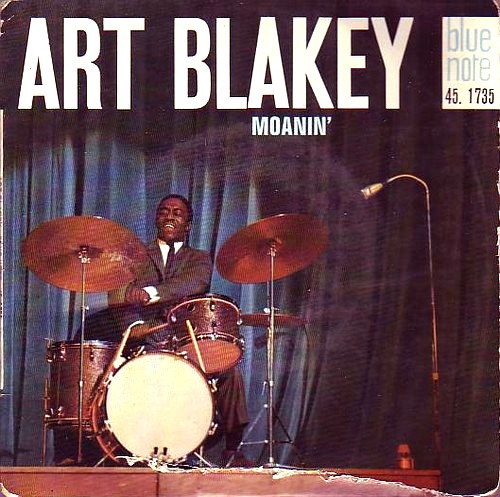
257
Art Blakey formed The Jazz Messengers in 1953, and over the next thirty-seven years, the group’s rotating lineup would launch the careers of several of jazz music’s most remarkable talents. One of the Messengers’ finest incarnations was the group that Blakey assembled in 1958 to record the album that would eventually become known by the title of its opening track, “Moanin’.”
Not to be confused with the 1960 Charles Mingus song of the same name (#311), “Moanin’” was composed by The Jazz Messengers’ pianist, Bobby Timmons. Built upon his indelible hook, the track also provided extended features for each of the group’s five members. It’s the work of trumpeter Lee Morgan that stands out in particular, and the recognition that he earned for his contribution to the song would help Morgan launch his solo career two years later.
Art Blakey may sit just below the top echelon of jazz royalty, but he was truly a giant in the genre. While one may turn to other songs – such as “Free for All” (#428) – for more stirring evidence of his otherworldly drumming, “Moanin’” is his signature recording, and a fine exemplar of Blakey’s ability to surround himself with the best young musicians in jazz.
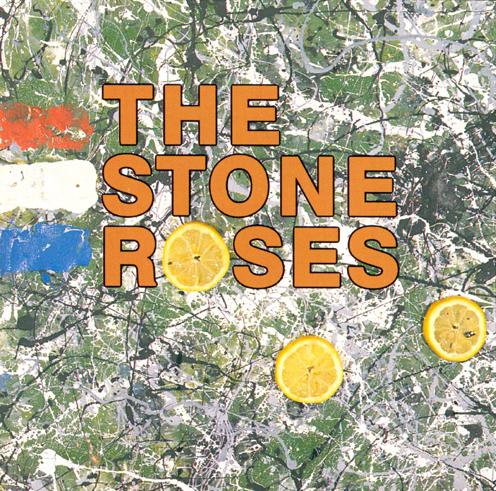
256
I first became intrigued by The Stone Roses’ debut album sometime in the late nineties, when a much-publicized British poll ranked it as the greatest record of all-time. It would be a few years before I procured a copy of the album, and needless to say, I did not concur with that assessment. That’s not to say that I wasn’t impressed with The Stone Roses, but few albums can live up to that level of hype.
A significant part of the 1989 record’s reputation lays in its opening and closing songs. “I Wanna Be Adored” (#533) is a moody, psychedelic track that sets an intriguing atmosphere, and – in many ways its opposite – “I Am the Resurrection” serves as a jubilant conclusion.
Arranged in two distinct halves, “I Am the Resurrection” opens with a stomping, Motown-esque beat. John Squire’s guitar matches the bravado of Ian Bown’s vocals, giving the song a glammy sense of grandeur. The second half is an extended jam – one that shows a far more dexterous side of the group than anything else in the album’s preceding forty-five minutes. It was this part that, along with the work of a handful of Stone Roses’ contemporaries, would establish a template for the rock-meets-dance sound of the “Madchester” scene.
Ultimately, The Stone Roses may not be the best album of all-time – though it is one of the best of the eighties – but “I Am the Resurrection” makes for one hell of a celebratory conclusion. It’s little wonder that the Manchester group would struggle in trying to follow it up.
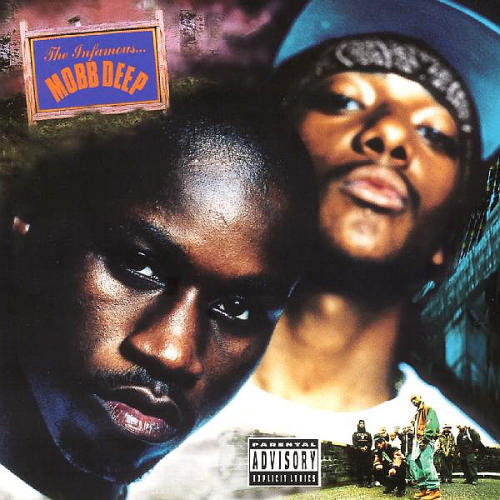
255
Even more so than any track from Nas’ epochal Illmatic, the first single from Mobb Deep’s 1995 record, The Infamous, gave a harrowing account of growing up in the Queensbridge housing projects. In two dense verses, “Shook Ones, Pt. II” found the group’s pair of emcees – Havoc and Prodigy – outclassing virtually all their contemporaries.
The ominous tone of “Shook Ones, Pt. II” is established by the instrumental backing track. Repurposing a shrieking effect from Quincy Jones’ experimental 1972 piece, “Kitty With a Bent Frame,” the song was given an alarming hook that served as a fitting backdrop to the duo’s tale of crime, violence, and survival.
In addition to the density of the song’s verses, “Shook Ones, Pt. II” drove its message home with a powerful chorus – helping to earn the single a respectable measure of commercial success. While there were undoubtedly songs from the “gangsta” rap styling that had a bigger impact on the contemporary pop charts, “Shook Ones” was a rarity, in that it has lost none of its power in the twenty-five years since its release.
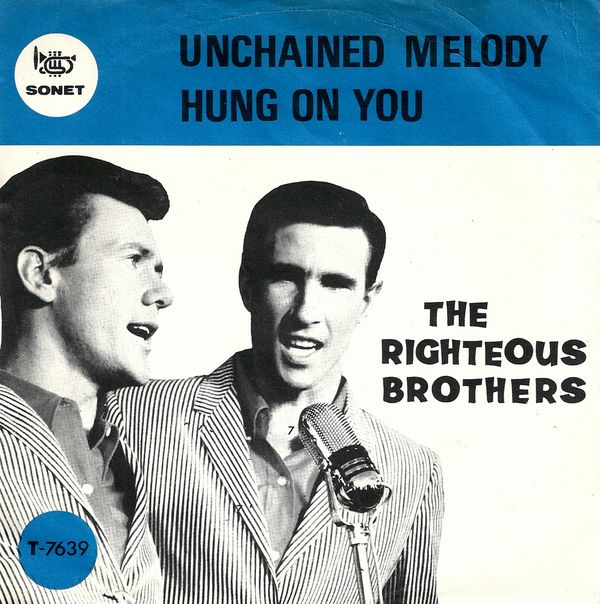
254
“Unchained Melody” was written in 1955, and it charted no less than four times within a year of its publishing. However, despite the success of earlier versions of the song, they were all rendered virtually obsolete by The Righteous Brothers’ 1965 Phil Spector-produced single.
The unforgettable vocal performance of Bobby Hatfield came as the result of a coin toss, won against his singing partner, Bill Medley. While both had wanted to sing the track, Hatfield won the honor, and Medley settled for playing the song’s lovely, understated piano part.
The romanticism of “Unchained Melody” came as something of a throwback to a bygone era when it arrived in the summer of 1965. Set to a delicate arrangement that builds to a Wall of Sound climax, the song was initially released as the B-side to a much lesser tune, “Hung On You.” Despite its placement – and Spector’s protestation of deejays who insisted on playing the flip side – the song became a hit on both sides of the Atlantic.
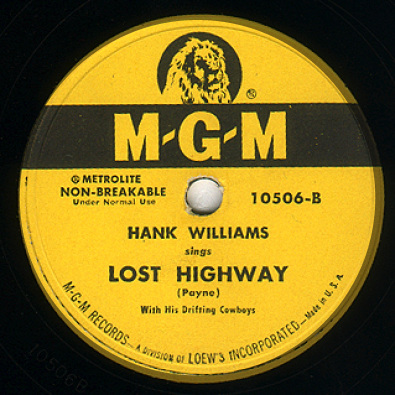
253
One of the most iconic songs in the American country music songbook, “Lost Highway” was written and recorded in 1948 by Leon Payne. Since performed and recorded by artists such as Bob Dylan, U2, Townes Van Zandt, and The Replacements, the track was given its definitive reading in 1949 by Hank Williams.
Initially released as the B-side to “You’re Gonna Change (Or I’m Gonna Leave),” “Lost Highway” was not a major hit for Williams, but it has become one of the most beloved tracks in his discography. Its mournful tone and lyrics proved to be the perfect match for Williams’ plaintive vocals, and the song takes on a greater poignancy within the context of his tragically brief life.
Williams is rightfully revered as one of America’s greatest songwriters, but like many other iconic artists, he proved to be a brilliant interpreter of song as well. “Lost Highway” is a stirring example of his ability to take an already-great piece of music and lend it an even deeper sense of gravity and pathos.
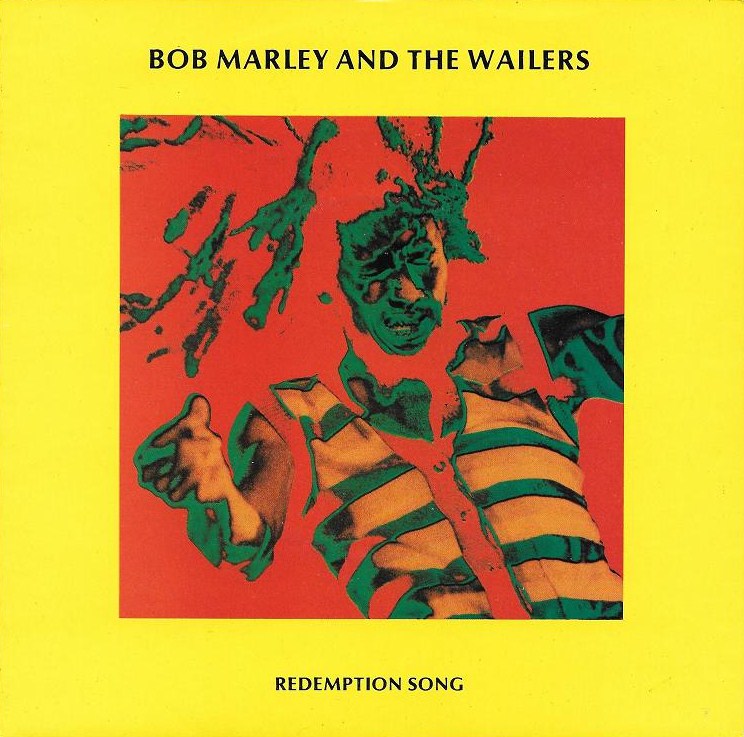
252
While it seems a bit counterintuitive, my pick for Bob Marley’s greatest song is perhaps, stylistically speaking, the least representative track in his celebrated catalog. A moving solo acoustic performance, “Redemption Song” is the reggae icon’s most intimate and gripping recording.
Written and recorded while Marley was dying of cancer, “Redemption Song” found him taking inspiration from Marcus Garvey’s Pan-Africanist message. While Garvey had proven to be an inspiration to other reggae greats like Burning Spear and Culture (#966), the stripped-down performance captured in “Redemption Song” gave Garvey’s message a heightened sense of immediacy.
That immediacy was underscored by “Redemption Song”‘s placement in Marley’s discography. Appearing as the last song on 1980’s Uprising, the solo performance carried not only the weight of a typical album closer, but it also stood as the last word before Marley’s death, just months after the album’s release. Ending on an unresolved D7 chord, the track managed to become even more poignant upon his passing.
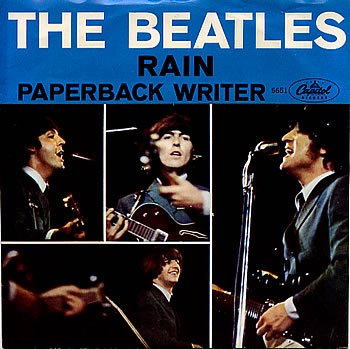
251
When I first really went about discovering The Beatles during my sophomore year of college, I cast my lot with Sgt. Pepper. For my next step, I opted to get a big picture view of the band, and decided to go the compilation route. First picking up the 1962-1966 “red” comp and then its 1967-1970 “blue” sequel, the singles collection Past Masters seemed largely redundant. As a result, it would be a few years before I heard one of the band’s greatest tracks.
Released as the B-side to “Paperback Writer,” “Rain” was one of two stellar outtakes from the sessions for 1966’s Revolver. One of the group’s most forward-thinking productions, the song took advantage of tape manipulation (both the tempo-altering “varispeed” effect, and backward masking) to help achieve its deliberately trippy sound. Added to this are impressive instrumental contributions from each of the band’s members – including one of Ringo Starr’s finest drum performances.
I’ve always attributed the perpetual freshness of “Rain” with my delayed encounter of the song. However, I’m now going on twenty years of it being part of my own heavy rotation. Perhaps that means that it is just a particularly special track from pop music’s greatest band.
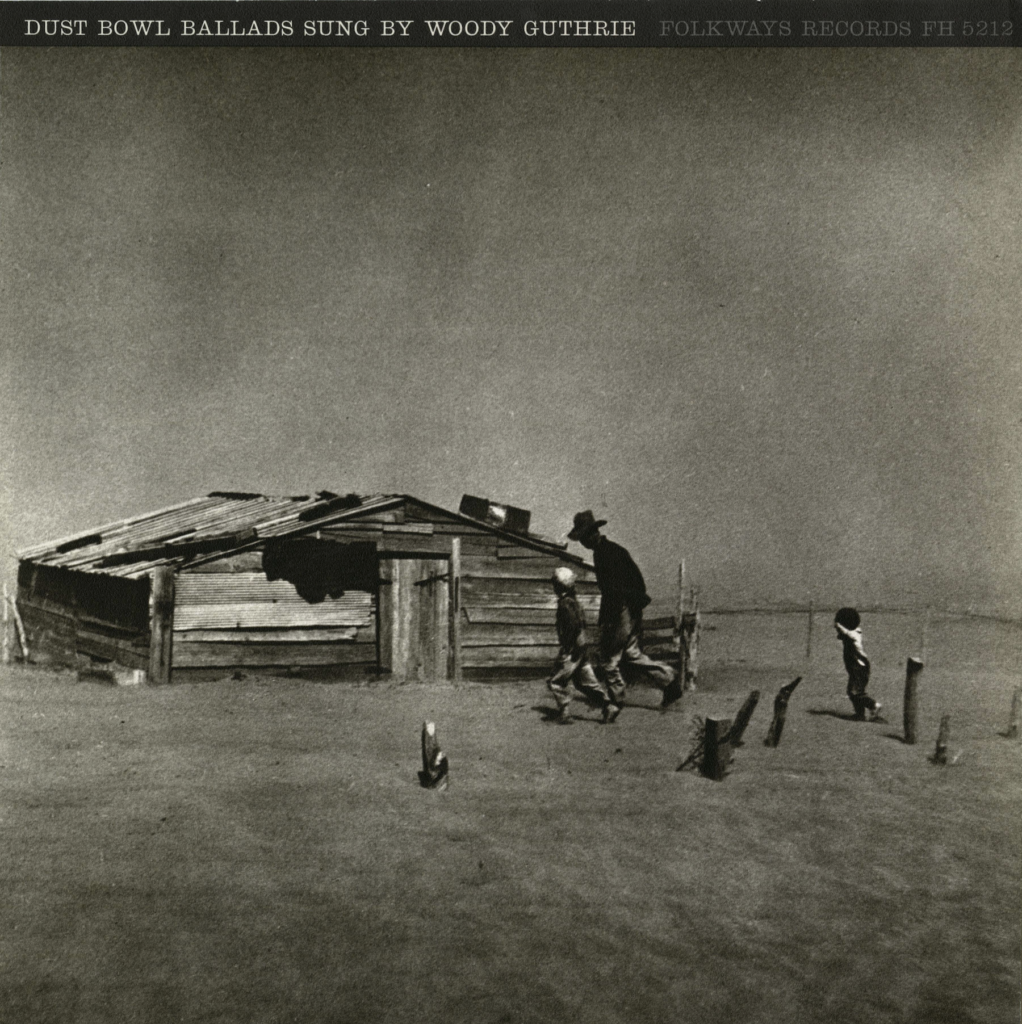
250
Among the most stirring of Woody Guthrie’s Dust Bowl Ballads, “I Ain’t Got No Home in This World Anymore” was a timely – and significant – variant on The Carter Family’s recording of “I Don’t Feel at Home in This World Anymore.” Set against the backdrop of an ecological calamity, the song’s jaunty melody and spirited performance belied the message of one of Guthrie’s darkest compositions.
Guthrie viewed the song as a response to the naive religiosity of the Carters’ track. Where their song suggested that an acceptance of life’s struggles would be repaid in the afterlife, Guthrie turns his ire toward the sources of the Dust Bowl migrant’s struggles: the greedy banks, businessmen, landowners, and politicians who put profit before people. Incidentally, a never-recorded lyrical variant of “I Ain’t Got No Home” would focus these frustrations toward a certain patriarch of another generation’s race-baiting policies.
Never one to miss the mark in crafting a message of universality, Guthrie drove his point home in the song’s final stanza:
Now as I look around, it’s mighty plain to see
This world is such a great and a funny place to be;
Oh, the gamblin’ man is rich an’ the workin’ man is poor,
And I ain’t got no home in this world anymore.
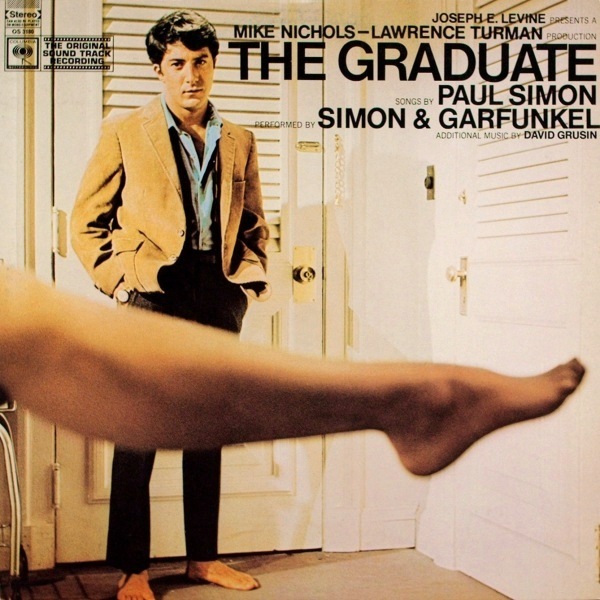
249
In a rather keen moment of inspiration, director Mike Nichols opted to score his film The Graduate with contemporary pop music. While this is a pretty standard move in cinema today, it was a novel idea when Nichols pitched it in 1967. In an attempt to match the film’s delicate balance between comedy and drama, Nichols picked a handful of particularly contemplative songs from Simon & Garfunkel for the soundtrack.
With the folk duo officially on board with the project, Nichols pushed for Paul Simon to write a handful of new songs for the soundtrack. While Simon only managed to craft a single track by the imposed deadline, the song would perfectly capture the generation gap that The Graduate‘s storyline ostensibly centered upon.
Originally titled “Mrs. Roosevelt,” the song was renamed to match one of the film’s lead characters: Anne Bancroft’s Mrs. Robinson. The track found Simon offering a sharp mix of social commentary, generational politicking, and vivid lyricism – all clever, and catchy enough to forgive its heavy use in the film’s final act.
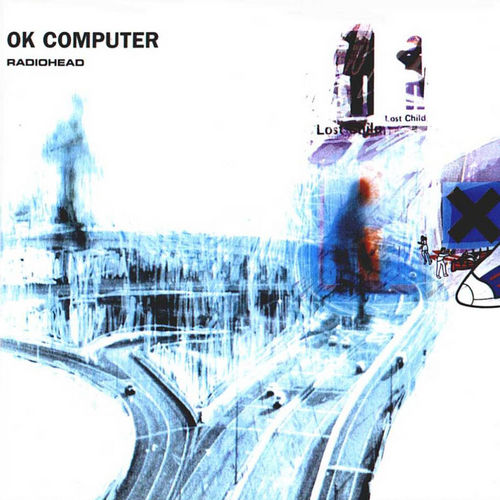
248
A calm lullaby nestled within the final third of a generation-defining album, “No Surprises” is a highlight among many on Radiohead’s OK Computer. Matching its delicate melodicism with deft commentary on contemporary malaise – a recurring theme across OK Computer – the song stands as one of Radiohead’s finest pieces of songcraft.
Largely forgoing the experimental impulses of the surrounding tracks, “No Surprises” becomes all the more stunning in its slightly off portrayal of modern domestic life. The instrumental flourishes – chiming guitar, glockenspiel, and warm backing vocals in the final verse and chorus – only serve to underscore the song’s juxtaposition of light and darkness.
When taken within the context of OK Computer, it becomes easy to read into the cynical/sarcastic nature of Thom Yorke’s lyrical vignettes. However, cynical or not, “No Surprises” remains a simply lovely composition from an extraordinary album.
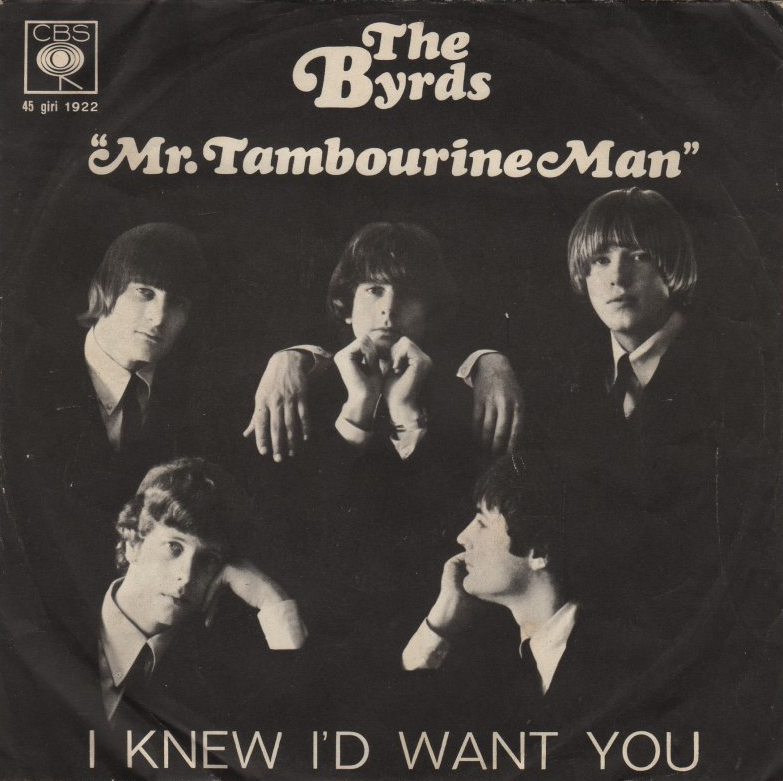
247
Six years before Gil Scott-Heron claimed that “The Revolution Will Not Be Televised” (#355), a different kind of revolution began ushering its way onto the radio stations of America. Inspired by the folk revival movement of the early-sixties, rock and roll began to embrace the notion that pop music could carry a message.
It was one of the folk revivalists who inadvertently became a central figure in this movement. Bob Dylan had yet to publicly “go electric” when The Byrds recorded their cover of his very-recently-written “Mr. Tambourine Man” – in fact, Dylan’s recording of the song was released just two weeks before The Byrds’ take. However, it was Dylan’s words – alongside the chiming Rickenbacker 12-string of Roger McGuinn – that all of a sudden became danceable pop radio material.
The merger of rock music and message would undoubtedly take a more significant – and comprehensible – form in the months to come. However, “Mr. Tambourine Man” represented a fascinating point in which it started to become more apparent that “the same old song” wasn’t quite going to cut it in the increasingly turbulent sixties.
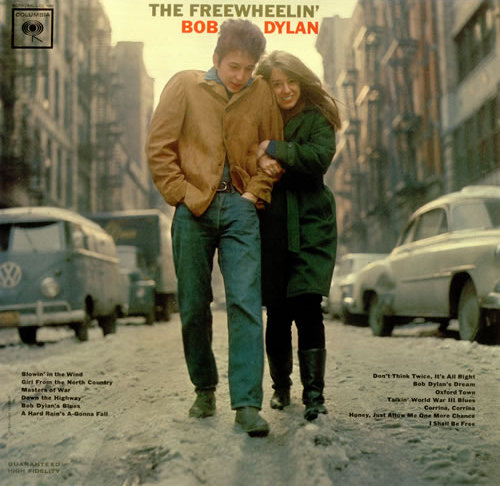
246
Of course, that Dylan guy also had a remarkable ability to operate outside of the confines of topical music. This gut-wrenching ballad from 1963’s The Freewheelin’ Bob Dylan was Dylan’s first great relationship song – a stirring display of his mastery of the personal, in addition to his unparalleled skill with the political.
While Dylan had generated a decent amount of attention with his 1962 self-titled debut, Freewheelin’ feels like his true arrival moment all these years later. It was on this record that Dylan first displayed the range of his songwriting abilities – a range that is undermined by the simplistic portrayal of his early career as “protest songs.”
Yes, Dylan was writing stunning protest songs by 1963. However, “Don’t Think Twice, It’s All Right” is every bit as powerful in its matter of fact, but deeply-felt nature. It would be a couple more albums before Dylan would promise “another side,” but this track shows that the more personal elements of his writing were already fully formed.
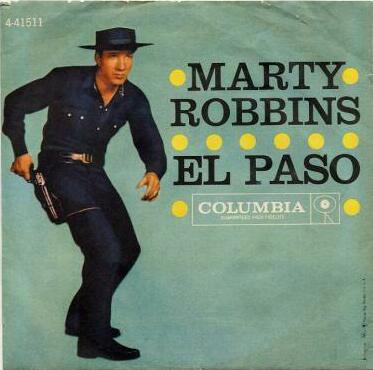
245
Marty Robbins’ 1959 album, Gunfighter Ballads and Trail Songs, is one of the great country-western records of all-time. Finding a perfect balance between authentic themes and commercialized showmanship, the album is a consistently impressive piece of fascinating Americana.
The album’s most iconic song, “El Paso” served as its first single and centerpiece. A tale of unrequited love and crimes of passion, “El Paso” matches an intriguing narrative with vivid lyrical detail. Its storytelling qualities are matched by a truly fantastic melody, and one of Robbins’ best vocal performances on an album full of them.
“El Paso” had already reached iconic status, well before Vince Gilligan memorably used the song to set up the revenge fantasy of the 2013 finale to Breaking Bad. Even still, it made for a surprisingly effective set up for an equally iconic piece of pop culture history.
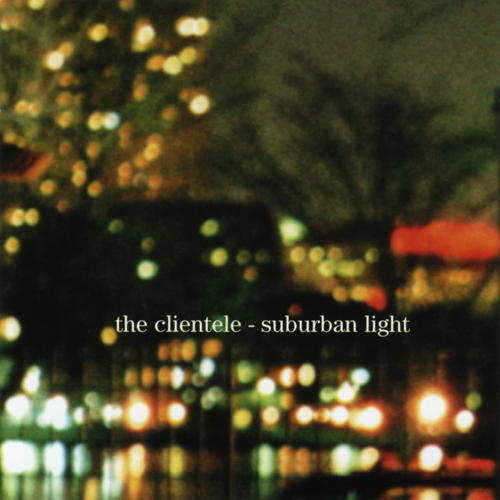
244
We’re into the stage of this list where I’m beginning to include songs that I have – at one point or another – argued to be perfect. I know that’s a loaded term, but honestly, I can’t find even the slightest of flaws in this absolutely gorgeous track from The Clientele.
Skeletally arranged – but even more beautiful in its fragility – “Reflections After Jane” borrows its vibe from The Velvet Underground & Nico. Instead of being coded in that album’s seedy allusions, however, The Clientele position “Jane” as an ode to the sublimity of the mundane. The simple elegance of Alasdair MacLean’s minimalist guitar part echoes the “reflections” of the track’s title, as do the allusions to rain that run throughout the song, and its companions on the group’s 2000 compilation, Suburban Light.
The Clientele have built a respectable catalog on the strength of a relatively narrow wheelhouse. Some might call it “consistent,” but within that catalog, “Reflections After Jane” stands out as something truly majestic, and utterly perfect.
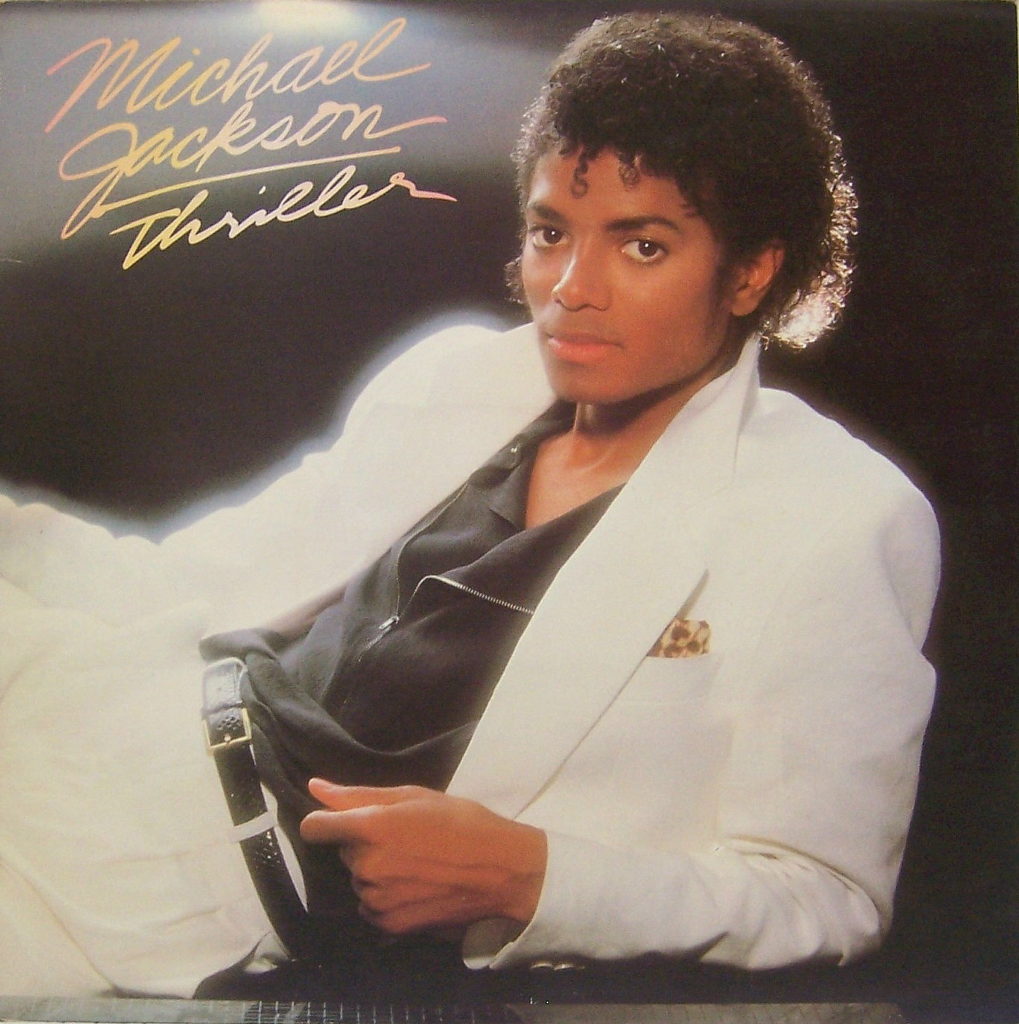
243
When I was a kid – probably around five – my mom bought my older brother a copy of Thriller as a Christmas gift. I don’t remember him ever listening to it – he might have – but he didn’t really have to. Nearly every track from the album was an inescapable radio hit between the years of 1982-1985. If you grew up in the eighties, you just knew this album, whether you wanted to or not.
Michael Jackson fandom is obviously a delicate subject these days, but even from my young perspective, Jackson always seemed like a source of controversy – some justified, some not, and some a byproduct of extraordinary circumstances to which few child-stars-turned-global-icons could ever truly relate. However we choose to separate those controversies into ill-fitting compartments, we should at least all agree that “Billie Jean” is an absolute jam.
The peak of Jackson’s many collaborations with Quincy Jones, “Billie Jean” is a song in which every single element is in its right place. The crisp beat, pulsing bass, and dramatic strings provide a perfect backdrop for one of Jackson’s greatest vocal performances. It’s a masterful display of composition, arrangement, production, and performance, and a moment in which Jackson’s status as the biggest pop star on the planet seemed fully, completely justified.
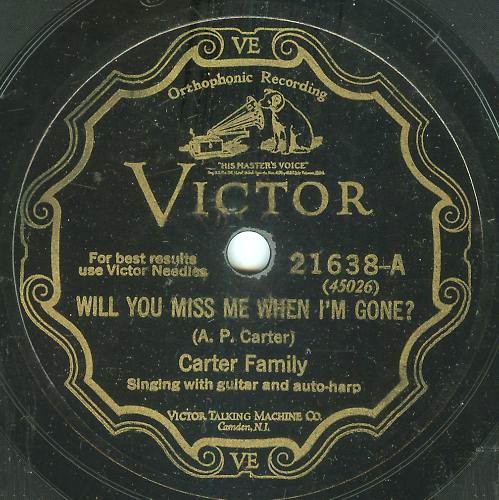
242
As far as I am aware, the oldest manufactured product that I own is a copy of this 1928 single by The Carter Family. I don’t even have a turntable that will play it, or the other 78rpm disc in my possession – Chick Webb and Ella Fitzgerald’s 1938 “A-Tisket A-Tasket” – but it remains one of my favorite items in my record collection nonetheless.
Hailing from Maces Springs, Virginia, The Carter Family were arguably the first country music stars – recording a long series of hit records for Victor in the late-1920s and early-1930s. Eventually, they would become a cross-generational act, but the initial incarnation of the group centered around the songwriting of A.P. Carter, and the guitar/autoharp of his wife Sarah and sister Maybelle.
The Carters would record several deeply affecting tracks, and then some really preachy ones, but “Will You Miss Me When I’m Gone” edges out some fine contenders – namely “Wildwood Flower” and “Single Girl, Married Girl” – as their best moment. Not ones to beat around the bush, the song’s premise is contained entirely within its title. Another Carter Family death song – there are a lot of them – it sets its sincere, heartbreaking question to one of the group’s most memorable vocal performances.
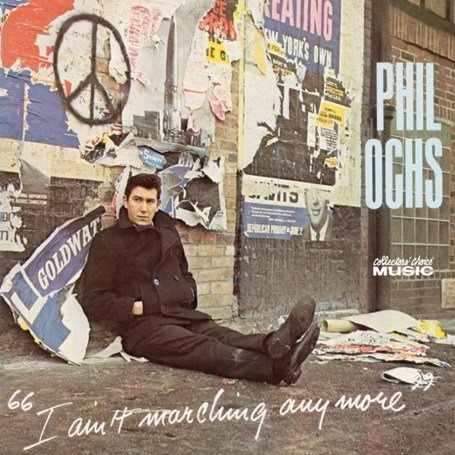
241
Throughout his career – and his tragically-brief life – Phil Ochs perpetually stood in the shadow of Bob Dylan. Even when Dylan largely gave up topical material in the mid-sixties, Ochs rarely avoided comparisons to a simply incomparable artist. Perhaps I’ve done him no favors by introducing his top-rated song on this list with another Dylan mention, but do understand that Ochs was the real deal. His commitment to his craft was sincere, uncompromising, and total.
Ochs’ signature song was the title track to his second album, 1965’s I Ain’t Marching Anymore. In five quick verses, Ochs traces a great deal of America’s history of military conflicts, from the World Wars to the Plains Wars. Each verse ends with the song’s defiant title statement, though Ochs suspects that it’s always just a matter of time before another generation of young Americans will be sent into battle.
Of course, it was the escalating war in Vietnam that cast a shadow over “I Ain’t Marching Anymore.” The writing wasn’t just on the wall; history was already repeating itself. Ochs would spend the next decade “fighting the fight.” He died of suicide in 1976, but the last words of his most famous song linger on:
Call it “Peace” or call it “Treason”
Call it “Love” or call it “Reason”
But I ain’t marchin’ any more

